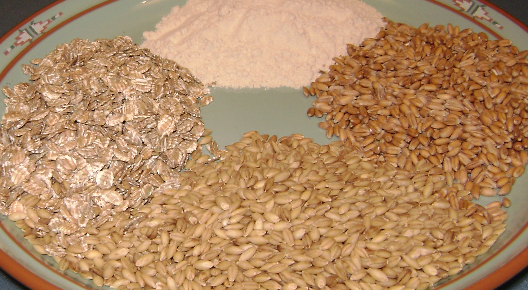13 week cooking course
- Introduction to Cooking
- Understanding Ingredients
- Making Breakfast
- Dinner Delights
- World Cuisine: Asia
- World Cuisine: Europe
- Baking and Bread Making
- Vegan and Vegetarian Cooking
- Gluten Free Cooking
- Healthy Eating and Nutrition
- Kitchen Finale and Consolidation
Gluten Free Cooking
Understanding Gluten-Free Ingredients

Protein composite found in wheat and related grains, including barley and rye.
Gluten is a protein found in wheat, barley, and rye. It gives elasticity to dough, helping it rise and keep its shape, and often gives the final product a chewy texture. However, for individuals with celiac disease, gluten sensitivity, or those who simply choose to follow a gluten-free diet, understanding gluten-free ingredients is crucial.
What is Gluten and Where is it Found?
Gluten is a mixture of two proteins, gliadin and glutenin, which are found in the endosperm (a type of tissue produced in seeds that are ground to make flour) of wheat, barley, and rye. Gluten is what makes dough elastic, helps it rise and keep its shape, and gives bread its chewy texture.
However, gluten can cause inflammation in the small intestines of people with celiac disease. Even people without this disease may experience symptoms like bloating, diarrhea, and stomach pain after eating foods with gluten. This is known as non-celiac gluten sensitivity.
Common Gluten-Free Grains and Flours
There are many grains and flours that are naturally gluten-free and can be used as alternatives in cooking and baking. These include:
- Rice: Both white and brown rice are gluten-free. Rice flour can be used in a variety of baking recipes.
- Corn: Cornmeal and corn flour are both gluten-free. They can be used in baking and to make polenta or grits.
- Quinoa: This grain is not only gluten-free but also high in protein. Quinoa flour can be used in baking.
- Buckwheat: Despite its name, buckwheat is not related to wheat and is gluten-free. Buckwheat flour can be used for pancakes, bread, and other baked goods.
Gluten-Free Alternatives for Common Ingredients
Many common ingredients contain gluten, but there are gluten-free alternatives available:
- Soy Sauce: Traditional soy sauce contains wheat, but tamari is a gluten-free alternative that is very similar in taste.
- Pasta: Gluten-free pasta is typically made from rice, corn, quinoa, or a blend of these grains.
- Bread: Gluten-free bread is available in most supermarkets, or you can make your own using gluten-free flours.
Avoiding Cross-Contamination
Cross-contamination occurs when gluten-free foods come into contact with foods that contain gluten. This can happen during the manufacturing process, at the grocery store, or at home if foods are prepared on common surfaces or with utensils that weren't thoroughly cleaned after being used to prepare gluten-containing foods.
To avoid cross-contamination:
- Use separate cutting boards and utensils for gluten-free food preparation.
- Store gluten-free breads and other packaged foods in a separate area or in sealed containers to prevent them from coming into contact with gluten.
- Read labels carefully. Some products may be labeled "gluten-free," but they could still be cross-contaminated if they were made on the same equipment as gluten-containing products.
Understanding gluten-free ingredients is the first step in mastering gluten-free cooking. With a bit of knowledge and practice, you can prepare a variety of delicious and healthy gluten-free meals.